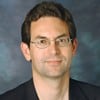
John Halamka, MD, CIO, Beth Israel Deaconess Medical Center
Since 2016 is the 20th year I’ve served as CIO, I’ve given a great deal of thought to the various careers I’ve had and the roadmap for the 20 next years of my working life.
In my late teens and 20s I was an entrepreneur running a 35-person software company while doing my medical and graduate school training. I was also a winemaker, home builder, and engineer.
In my early 30’s I was an Emergency physician, software coder, and data analyst.
In my mid 30’s as a CIO, I focused on architecture, high reliability computing, and centralization of IT service delivery.
In my early 40’s, I focused on disaster recovery, interoperability, and educational technologies.
In my mid 40’s, I focused on security, national policy, and IT industry leadership.
In my early 50’s, I’ve focused on social networking, mobile, analytics, cloud and innovation.
So what will my mid 50’s bring? Although in my previous incarnations, I’ve written code, built hardware, and shaped architecture, it feels that this next stage of life should be about mentoring the people who will eventually replace me.
Mentoring from those who came before me (Sensei is a Japanese honorific term that is literally translated as “person born before another”) has always guided my path. My parents were my earliest mentors. In my college years I worked for physicist Edward Teller and economist Milton Friedman, who had a great influence on me. My undergraduate advisor was Condoleezza Rice, a remarkably talented Stanford junior faculty member at the time, just 7 years older than me. In my later years at Stanford, I lived with Dr. Fred Terman, the “father of Silicon Valley.” In my entrepreneurial days I had the opportunity to interact with Hewlett and Packard, Jobs and Wozniak, Bill Gates and Paul Allen. My medical school advisors were J. Michael Bishop and Harold Varmus, who won the Nobel Prize. In my BIDMC career, I’ve been mentored by various professors from Harvard Business School, CEOs of publicly traded companies, and billionaire investors.
It’s now my time to pass along all my experiences through teaching, writing, and being available to all those who want to seek my help. My role as Harvard professor is to accelerate innovation by reducing barriers and empowering those who can orchestrate change. My role as BIDMC System CIO is to harmonize policies/technologies and resolve conflict whenever it arises. My job is neither to command/control nor micromanage, but to offer strategic guidance and help implement tactics when asked. I try to be a servant leader and embrace a “set of practices that enriches the lives of individuals, builds better organizations and ultimately creates a more just and caring world.”
I will strive to be a mentor in two worlds:
- Running a healthcare IT innovation lab at BIDMC that supports a standard process for bringing ideas to real world production systems in a live clinical environment;
- Running an organic farming and sustainable agriculture lab at Unity Farm that educates the community about raising healthy animals and plants with little more than your brain, two hands and the forces of nature.
In the coming months, I’ll write about the steps I’m taking to develop both nurturing environments—formalizing the mentoring work I first outlined three years ago in The Toad and the Snake post, and establishing the non-profit Unity Farm Sanctuary Inc., a charity providing agricultural education for the greater Boston community.
The past 20 years have been great. The next 20 years will be even better because people smarter than me will be taking on the challenges ahead, I’ll just be clearing a path for them.
[This piece was originally published on John Halamka’s blog, Life As A Healthcare CIO. To view the original post, click here.]


Share Your Thoughts
You must be logged in to post a comment.